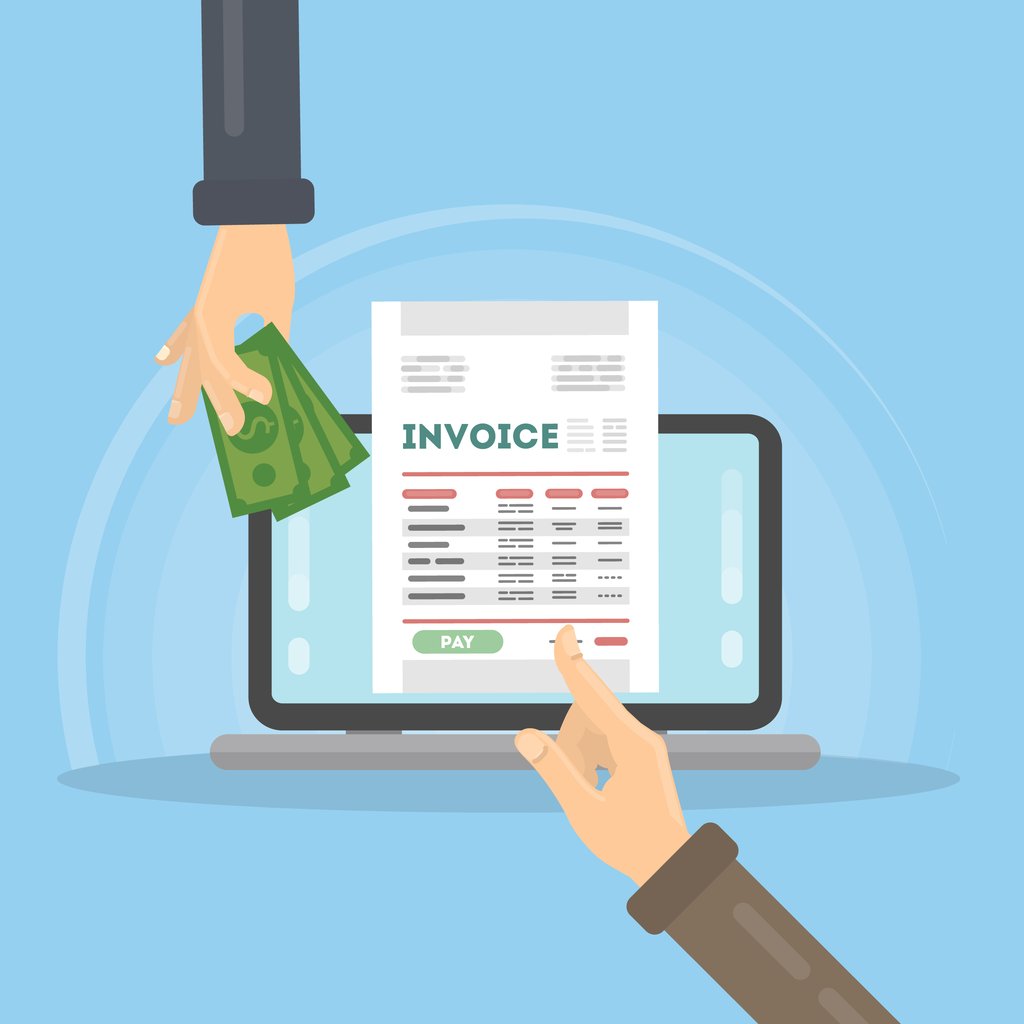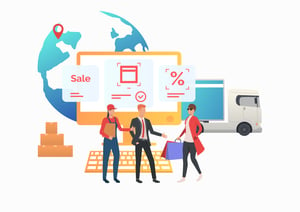Effortless Invoicing: The Advantages of Automated Invoice Processing

In today’s fast-paced business world, efficiency is key. And when it comes to managing your company’s finances, streamlining processes and saving valuable time can make all the difference. That’s where automated invoice processing comes into play.
In this blog post, we’ll explore what exactly automated invoice processing is and how it can revolutionize your procurement process. We’ll delve into the numerous benefits that come along with it – from time and cost savings to increased accuracy and a streamlined workflow. We’ll also take a closer look at how automated invoice processing works and highlight some top features to look for in an automated invoicing system.
What is Automated Invoice Processing?
Automated invoice processing refers to the use of technology and software to streamline and automate the entire invoicing process. Gone are the days of manually inputting data, chasing down approvals, and dealing with paperwork overload.
With an automated invoicing system in place, businesses can eliminate manual errors and inefficiencies that often plague traditional invoicing methods. This innovative solution allows for seamless integration with accounting systems, making it easier than ever to generate invoices, track payments, and manage cash flow.
By leveraging optical character recognition (OCR) technology, automated invoice processing systems can extract relevant information from invoices such as vendor details, purchase order numbers, item descriptions, quantities, prices – you name it! This eliminates the need for tedious data entry tasks and significantly reduces human error.
Moreover, automated invoice processing enables businesses to set up approval workflows that ensure compliance with internal policies. This means no more lost or misplaced invoices; everything is stored electronically in one central location for easy access and retrieval.
This transformative technology not only saves valuable time but also improves accuracy and efficiency in your procurement process. It’s like having a dedicated team of professionals handling your invoicing needs without any effort on your part.
Benefits of Automated Invoice Processing
A. Time and Cost Savings
Time and cost savings are two crucial factors that every business aims to achieve. With automated invoice processing, these goals become easily attainable. By eliminating manual data entry and streamlining the invoicing process, businesses can save a significant amount of time and resources.
One of the primary benefits of automated invoice processing is the reduction in human error. Manual data entry is not only time-consuming but also prone to mistakes. These errors can lead to delays in payment processing, disputes with suppliers, and even financial losses for the company. Automated systems ensure accurate and error-free data input, minimizing the risk of costly mistakes.
Furthermore, by automating repetitive tasks such as invoice creation, approval routing, and payment scheduling, businesses can optimize their workflow efficiency. This allows employees to focus on more strategic tasks that contribute directly to business growth.
Automated invoicing also enables faster payment cycles. With streamlined processes and instant access to real-time data, businesses can speed up their billing procedures and improve cash flow management. This not only benefits suppliers who receive timely payments but also enhances relationships with vendors by establishing trustworthiness.
B. Increased Accuracy
One of the key advantages of automated invoice processing is the increased accuracy it brings to your invoicing process. Manual data entry can be prone to errors, such as typos or transposing numbers, which can lead to costly mistakes and delays in payment.
With automated invoice processing, these errors are significantly reduced. The software uses optical character recognition (OCR) technology to extract data from invoices accurately and quickly. It eliminates the need for manual entry, reducing the likelihood of human error.
The system also performs automatic validations and cross-references against existing data, ensuring that all information is correct and complete before proceeding with payment. This helps catch any discrepancies or inconsistencies early on, preventing potential issues down the line.
By improving accuracy in your invoicing process, you not only reduce financial risks but also build trust with your suppliers and clients. They will appreciate timely payments without any mistakes, leading to stronger relationships and a smoother procurement cycle overall.
C. Streamlined Workflow
When it comes to invoicing, a streamlined workflow is crucial for efficient and error-free processing. Automating the invoice process can significantly enhance workflow efficiency, allowing businesses to save time and resources while ensuring accuracy.
With automated invoice processing, all steps of the invoicing cycle are seamlessly integrated into one system. This eliminates the need for manual data entry and reduces the chances of human errors that can occur during manual processes. Invoices are automatically generated, sent out, tracked, and recorded in a centralized platform.
By streamlining the workflow through automation, businesses can easily track the status of invoices at any given time. This ensures transparency and accountability throughout the entire process. Additionally, automated systems provide notifications and reminders for outstanding invoices or overdue payments, enabling businesses to promptly follow up with clients.
Another advantage of a streamlined workflow is improved collaboration among team members involved in invoicing tasks. Automated systems allow multiple users to access relevant information simultaneously from anywhere at any time. This eliminates delays caused by waiting for approvals or feedback from different departments or individuals.
Furthermore, automated invoice processing facilitates seamless integration with accounting software or enterprise resource planning (ERP) systems used by businesses. This integration enables real-time synchronization of financial data across various platforms and ensures accurate record-keeping without duplicate entries or discrepancies.
How Does Automated Invoice Processing Work?
Automated invoice processing is a game-changer for businesses looking to streamline their accounts payable processes. But how does it actually work? Let’s take a closer look.
1. Data Extraction: The first step in automated invoice processing involves extracting relevant data from invoices, such as vendor information, purchase order numbers, and line item details. This is done using optical character recognition (OCR) technology, which can accurately capture data from scanned or digital invoices.
2. Validation and Verification: Once the data is extracted, it undergoes validation and verification checks to ensure accuracy. Any discrepancies or errors are flagged for review by the appropriate personnel.
3. Matching and Approval: Invoices are then matched against purchase orders or contracts to confirm that the goods or services have been received as expected. If everything checks out, the system automatically routes the invoice for approval based on predefined workflows.
4. Payment Processing: After approval, automated invoicing systems initiate payment processing by generating electronic payments or sending instructions to accounting software for further action.
5. Reporting and Analytics: Advanced automated invoicing solutions provide real-time reporting and analytics capabilities that offer valuable insights into spending patterns, cash flow management, and supplier performance metrics.
By automating these steps, businesses can significantly reduce manual effort while ensuring greater accuracy in their invoicing processes – ultimately leading to improved efficiency and cost savings.
Top Features to Look for in an Automated Invoicing System
When it comes to choosing an automated invoicing system, there are several key features that you should keep in mind. These features can make a significant difference in the efficiency and effectiveness of your invoice processing. Here are some top features to look for:
1. Optical Character Recognition (OCR): OCR technology allows the system to extract data from invoices automatically, eliminating the need for manual entry. This not only saves time but also reduces the chances of human error.
2. Integration Capabilities: The ability to integrate with other software systems such as accounting or ERP systems is crucial for seamless workflow and data accuracy. Look for an invoicing system that offers robust integration options.
3. Customization Options: Every business has unique invoicing requirements, so it’s important to choose a system that allows you to customize templates, workflows, and approval processes according to your specific needs.
4. Advanced Reporting and Analytics: A good automated invoicing system should provide comprehensive reporting capabilities so you can track invoice status, payment history, and identify potential bottlenecks or areas for improvement.
5. Mobile Accessibility: In today’s fast-paced business environment, having access to your invoicing system on-the-go is essential. Look for a solution that offers mobile accessibility through apps or responsive web design.
6. Security Measures: Protecting sensitive financial information is paramount when dealing with invoices. Ensure that the chosen system has robust security measures like encryption protocols and user authentication mechanisms.
By considering these top features when selecting an automated invoicing system, you can ensure smoother operations, improved accuracy, and increased productivity within your procurement process.
Choosing the Right Automated Invoicing Solution for Your Business
Choosing the right automated invoicing solution for your business can be a game-changer. With so many options available in the market, it’s important to carefully evaluate each one based on your specific needs and requirements.
First and foremost, consider the scalability of the system. As your business grows, you want an invoicing solution that can easily handle increased volumes without any hiccups. Look for a system that is flexible enough to adapt to changing demands and can seamlessly integrate with other software platforms you may be using.
Another key factor to consider is customization. Every business has unique invoicing needs, so having the ability to tailor the system to match your branding and workflow processes is crucial. Look for features like customizable templates, fields, and workflows that allow you to create professional-looking invoices while maintaining consistency across all communications.
Integration capabilities are also worth considering. If you already use accounting or ERP software, look for an automated invoicing solution that can integrate smoothly with these systems. This will eliminate manual data entry tasks and reduce errors by automating the transfer of invoice data between different platforms.
Data security should also be a top priority when choosing an automated invoicing solution. Ensure that the system provides robust encryption protocols, secure storage options, and user access controls to protect sensitive financial information from unauthorized access or breaches.
Don’t forget about customer support and training resources offered by the provider. A reliable support team will not only help you during implementation but also assist with any issues or questions down the line as you continue using their product.
In conclusion (no concluding section), finding the right automated invoicing solution requires careful consideration of factors such as scalability, customization options, integration capabilities, data security measures ,and customer support offerings (no summarizing). By selecting a system that aligns with your business needs (no repetitive phrases)and goals(no repetitive words),you’ll be well on your way towards streamlining your invoice processing operations (no topics).
Conclusion: The Future of Invoicing
As businesses continue to embrace digital transformation and automation, the future of invoicing looks incredibly promising. Automated invoice processing is revolutionizing the way organizations manage their financial operations. With its time and cost-saving benefits, increased accuracy, and streamlined workflow capabilities, it’s no wonder why more and more companies are adopting this technology.
The advantages of automated invoice processing go beyond just efficiency gains. By freeing up valuable time spent on manual data entry tasks, employees can focus on higher-value activities that drive innovation and growth for the business. This not only improves productivity but also enhances employee satisfaction.
Additionally, with increased accuracy comes improved vendor relationships and enhanced cash flow management. Late payments or errors in invoices can strain supplier partnerships; however, by automating the process, companies ensure prompt payment while minimizing disputes or discrepancies.
With advancements in machine learning and artificial intelligence technologies, automated invoicing systems will continue to evolve. These innovative solutions will become even smarter at recognizing patterns in data, identifying anomalies or potential fraud risks automatically.
Furthermore, integration with other software tools like ERP systems or accounting platforms will further streamline financial processes across departments within an organization.

